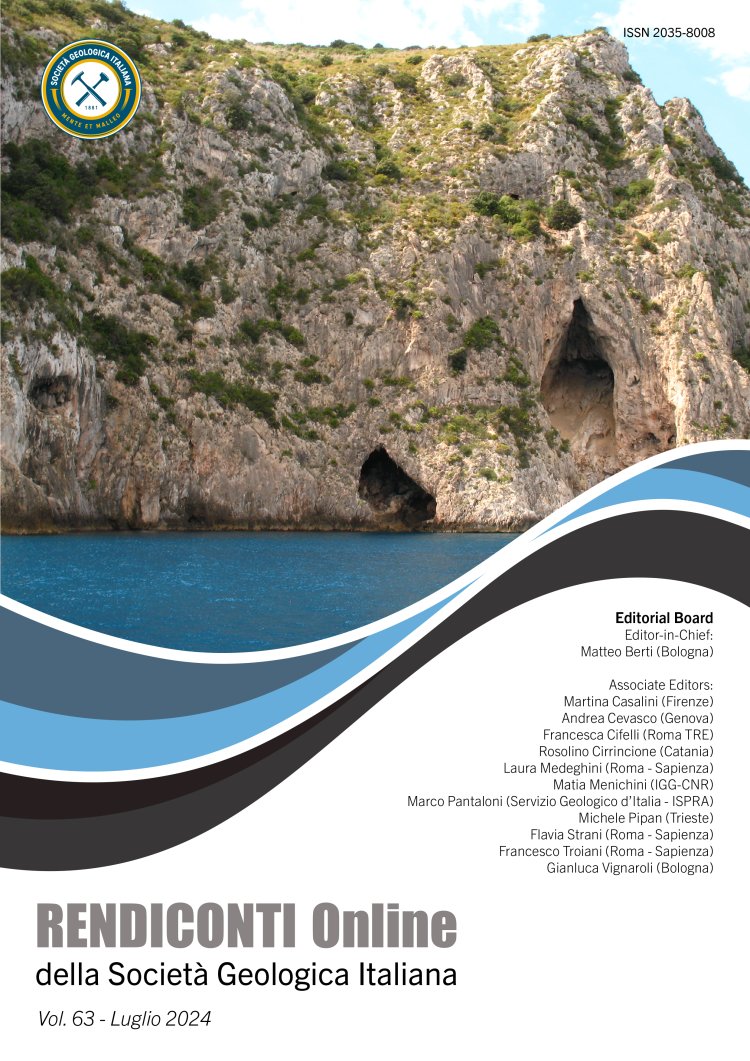
The controlling factors on bioclastic intercalations in the Tortonian hemipelagic marls of Latium-Abruzzi carbonate platform domain: the role of oceanography and climate
Marco Brandano1,2, Irene Cornacchia2, Rita Catanzariti3, Alessandro Mancini1 & Diego Marianelli1
1Dipartimento di Scienze della Terra, Sapienza Università di Roma, P. le Aldo Moro 5, Roma, Italia.
2Consiglio Nazionale delle Ricerche – Istituto di Geologia Ambientale e Geoingegneria (CNR-IGAG), – c/o Dipartimento di Scienze della Terra, Sapienza Università di Roma, P. le Aldo Moro 5, Roma, Italia.
3Consiglio Nazionale delle Ricerche – Istituto di Geoscienze e Georisorse (CNR-IGG), via G. Moruzzi 1, Pisa, Italia.
Corresponding author e-mail: a.mancini@uniroma1.it
Volume: 63/2024
Pages: 106-114
Abstract
The sedimentary record of a foreland basin allows unraveling of dynamics between shallow-water carbonate production and subsiding basins. This work aims to identify the source and the triggering mechanism on the deposition of Tortonian bioclastic intercalations occurring within hemipelagic deposits of the Latium Abruzzi Domain (Central Apennines). Two types of intercalations were identified. The first one shows a diverse skeletal assemblage composed of oligophotic and aphotic organisms, while the second contains only planktonic biota. The occurrence of these intercalations testifies to the presence of an active carbonate ramp during the Tortonian. The triggering mechanism for the sedimentation of these deposits has been identified in the action of internal waves. The latter formed due to the development of a strong pycnocline, sustained by global and regional climate evolution which led to significant stratification of the water column due to increased thermal and density gradients.
Keywords
Get Full Text